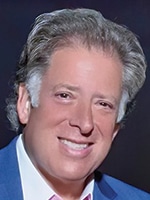It’s difficult to know whether pathologists in the study published in JAMA Oncology would have done better at distinguishing 0’s and 1’s had they known to look more closely at those cases. Providing that instruction would have biased the study, Dr. Rimm says. “There really wasn’t a good way to handle that weakness. We didn’t want to try to make the pathologists pick apart that dynamic range, since that’s not what the assay was designed for.”
Moreover, Dr. Rimm says, focusing on how well pathologists could do in that range “would be almost meaningless, because if they could get some consistency, we don’t know if they would be picking the responders or the nonresponders,” given that they weren’t looking at specimens from the clinical trial. That information would be better coming from AstraZeneca and Daiichi Sankyo, he says.
The Destiny trial did not appear to include patients whose tumors were classified as 0, according to those interviewed for this story. But another study, known as Daisy, did, and since some of those patients with scores of 0 did respond, “that makes us think those were really 1+’s, and that’s the concern,” Dr. Rimm says.
Echoing Dr. Allison, Dr. Bloom suggests that pathologists could become more reproducible than the study published in JAMA Oncology suggests. But that’s not the point. The current assay is simply inappropriate for newer needs, he says.
“It’s not an antibody problem. It’s basically a titer problem,” Dr. Bloom says. “We need a much more concentrated dilution so that we can be linear in the low range of HER2 expression.” But doing so would skew the number of cases reported as 3+. “We would start calling tumors 3+ that aren’t really overexpressed because the assay would saturate much too quickly.”
It seems unlikely that pathologists can reliably quantify both high and low ranges with the same assay, he says. Burning both ends of the candle may seem like a bright idea, but it’s not a long-term strategy.
Nor is trying to answer questions with insufficient data.
“What’s the best way to measure HER2 low?” Dr. Bloom asks. For that matter, what is HER2 low? “We’ve only had glimpses of data on HER2 low from the clinical trials.” Within that limited data, it appears that the higher the HER2 expression level, the more effective the therapy seems to be—including patients who might typically be called negative by IHC.
On a practical level, pathologists are trying to detect HER2 molecules on cells in the range from up to a thousand to several million, as Dr. Rimm has noted. Adds Dr. Bloom: “That’s a 3-log difference. That’s more than a thousand-fold difference between low-expressing and potentially high-expressing tumors.” Current IHC assays that rely on chromogenic detection systems have the ability to detect about a 1–1.5-log difference in expression, he says, meaning they can detect about a 10–50-fold difference.
Dr. Bloom and Dr. Rimm are coauthors of a paper that demonstrates that changing the level of antibody concentration may enable the current assays to be linear at low levels of expression instead of at high levels (Moutafi M, et al. Lab Invest. Published online ahead of print May 20, 2022. doi:10.1038/s41374-022-00804-9). Says Dr. Bloom, “You still have that 1–1.5-log expression level difference, but you have to decide: Do you want to be linear in the lower range of expression, or do you want to be linear in the higher range?”
That’s not a theoretical issue. Will pathologists need to distinguish the difference between 5,000 and 10,000 molecules? The clinical data aren’t available to answer that question, but the trend seems to be that tumors that show higher levels of HER2 expression derive more benefit, Dr. Bloom reiterates.
All of which puts pathologists in their current position, says Dr. Bloom: “When we call HER2 0 with our current assay, which we know isn’t linear in that lower range, it means that some of the cells we’re calling 0 might have significant HER2 expression.” Likewise, he says, calling a tumor HER2 1+ means it’s likely that the tumor has higher expression levels than a tumor assessed as HER2 0. In Dr. Bloom’s opinion, most cases that are called 1+ are at least 1+. But a 0 may not in fact be a 0. Says Dr. Rimm, “This suspicion is confirmed in the paper in Laboratory Investigation.”
What truly is 0 versus 1+? Dr. Allison teases out the question further. “Should 0 be below a normal breast epithelium? Because normal breast epithelium has some HER2. You’ve got to come up with some standard to calibrate to if you’re going to make that a threshold.
“But I wouldn’t want to recalibrate all our assays, which are so fine-tuned to predict HER2 positive versus not,” she continues. “We might need a separate HER2 test calibrated for the metastatic setting. Or maybe we won’t.”
So what’s a pathologist to do?Using the current assay at 40× “sounds interesting, but there’s no evidence to support it,” Dr. Rimm says. “I guess you have to decide whether you’re depending on evidence or whether you’re depending on what sounds like a good idea.”
Other options are under discussion. Dr. Rimm suggests it would be reasonable for vendors to retune their assays, adding more antibody to improve sensitivity. Once a bridging study is done, that could provide a solution, he says.
Dr. Bloom says it makes sense to continue to use the HER2 FDA-cleared antibodies for assessing cases for high levels of HER2.
If those cases are not called positive, then pathologists will need to decide whether to run a second assay to determine HER2 low levels—and whether those results will be useful. Does it make a difference if there are 60,000 receptors or 40,000, or 20,000 versus 10,000?

Dr. Bloom
Regardless of the eventual answer, Dr. Bloom says, “You won’t be able to see that difference with the current assays because they are not linear in that range. It doesn’t make a difference what you do. It doesn’t make a difference what games you try to play. It’s fundamentally the wrong assay.” On a practical level, “That means when we call something 1+, the range of HER2 expression in that 1+ could vary significantly. Meaning, some of the 1+’s may have as many as 200,000 receptors, while other 1+’s only 50,000 receptors.
“That’s a pretty big difference,” he says. “Yet for an oncologist reading a report, the results will be the same.” But if the number of receptors is what’s determining the efficacy of the drug, a fourfold difference in expression should be important.
Pick the range that addresses the clinical question, Dr. Bloom says—once you know what that range is. Which no one currently does. “Right now we just have trends looking at low levels of HER2 expression with nonoptimized assays,” he concedes. But if the data moves forward, the current assays run the risk of missing patients who would be eligible for Enhertu. “We could be missing a large number of patients and potentially mislead oncologists by including a pretty wide expression level of HER2 in the 1+ category.”
Continuing the journey in the Land of Ifs, Dr. Bloom returns to the matter of bystander effect. If that is the working mechanism, the question becomes: What is the arrangement of cells showing expression within the tumor? What is the distribution? Early data suggests this could have potential clinical implications. But for now, Dr. Bloom says, there are only abstracts—without sufficient data to answer questions about which assays might be appropriate. “They’re just teasing us right now.”Dr. Rimm talks about using digital image analysis to measure HER2, which the CAP’s data indicates about 20 percent of laboratories already do. Digital assessment might function almost like FISH does currently for borderline 2+ cases of HER2 IHC. “A 0 would be like a 2+. That’s what we need—some way to adjudicate the 0’s. It would be a second step. It’s just that the second step hasn’t been proven yet, although the Laboratory Investigation paper describes a fully quantitative low-range assay that could serve this purpose.”
There are many advantages to image analysis, Dr. Allison says, but they’re matched by the need for caution. Just as it’s possible to increase the intensity of stains for IHC, “the same can be true for intensity of staining using digital image analysis.” Setting the thresholds is still key. “So there are pitfalls. It’s imperfect in different ways.” It also adds complexity and time, but it might be useful as a second read, or as quality control, she says.
These and other issues will likely wax and wane as antibody drug conjugates become part of the scenery, but for now excitement lingers in the air.Dr. Rimm predicts Enhertu will change the landscape of treatment for breast cancer once it gets into the adjuvant setting. Fifteen percent of patients qualify for trastuzumab; as many as 80 to 90 percent could qualify for trastuzumab deruxtecan. He reports his oncology colleagues are calling the drug “the biggest thing to come along in breast cancer since chemotherapy.”
Even apart from the specifics of the Enhertu story, pathologists need to prepare to become quantitative with their measurements, Dr. Rimm insists, and not simply rely on ability to read cases as 0, 1, 2, and 3. He says he prefers a concentration on a tissue, versus counting molecules per cell. With the latter, he says, “You don’t know whether you’re cutting through cells at the North Pole or the Equator.” Averaging cells across a defined area, such as per square millimeter, on the other hand, is a “quantitative assay you can kind of hang your hat on.”

Dr. Rimm
That’s what pathology lacks right now, he says. “As pathologists, if we want to keep up with the times, and we want to keep getting our business from our oncologists, they need this kind of accuracy with this new class of drugs. We can’t rely on just our eyes being able to judge intensity like we did in the last century,” he says. Pathologists have long made it their business to “judge stuff—that’s how we make our living. But if we keep judging stuff, it will be taken out of our hands. They will take specimens somewhere else to get them measured.” Digitizing and quantification are not that hard anymore, he says. “If pathologists won’t do it, someone will.”
True, says Dr. Bloom. The world of spatial transcriptomics and spatial multiomics is garnering interest with the advent of new immunotherapy combinations and antibody drug conjugates. “It’s not prime time—yet,” he says. “But at some point it’s going to be incumbent on us to use these tools. The emergence of spatial biology is real. Pharma is paying a lot of interest into how spatial biology affects the efficacy of their therapies. We can likely expect, as pathologists, that in three to five years that will translate to us.”
And in the meantime? Even on the more familiar territory of HER2 assays, says Dr. Bloom, “Until we see more data,” what’s actually needed “is just a guess. We’re getting ahead of ourselves until we see the data.”
But the current discussion is important, he says. “This is exciting. Breast cancers showing low levels of HER2 expression are seen in a significant number of women. Over 80 percent of breast cancers are going to be potentially eligible for this therapy.
“There’s a lot of noise around this,” he concludes. “And there should be. This is a big deal.”
Karen Titus is CAP TODAY contributing editor and co-managing editor.
 CAP TODAY Pathology/Laboratory Medicine/Laboratory Management
CAP TODAY Pathology/Laboratory Medicine/Laboratory Management
